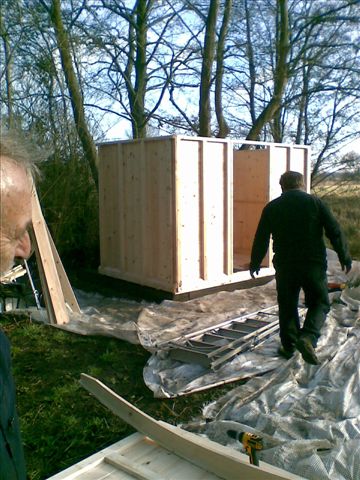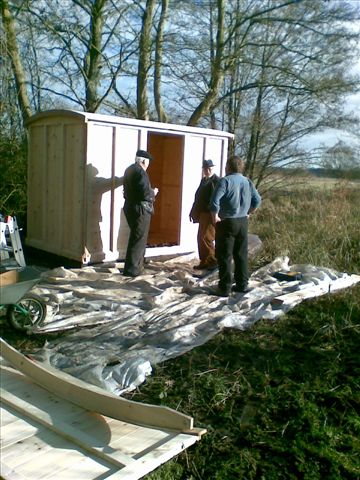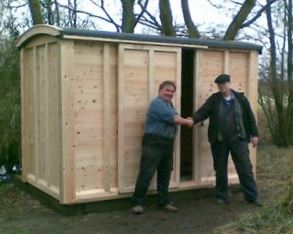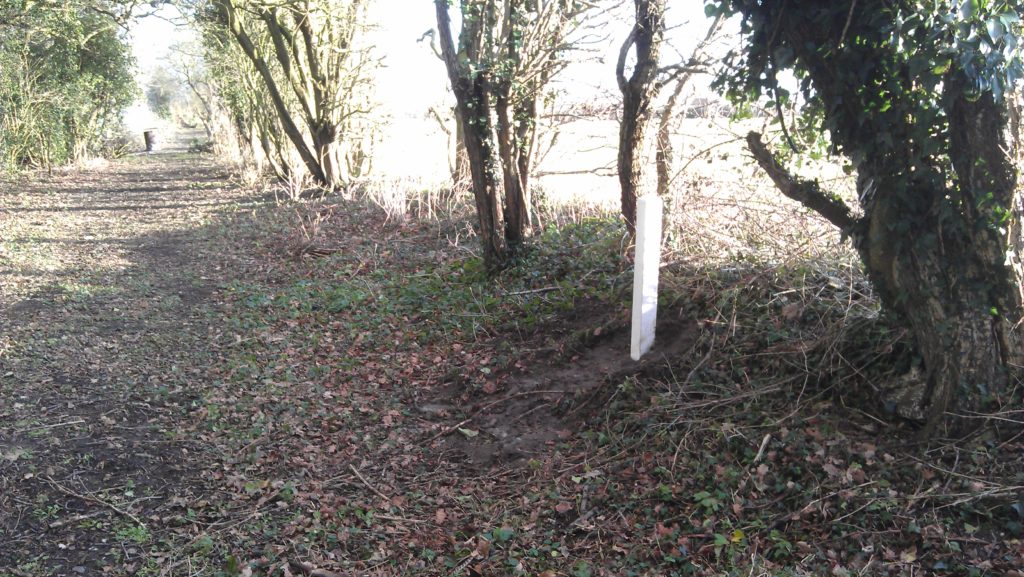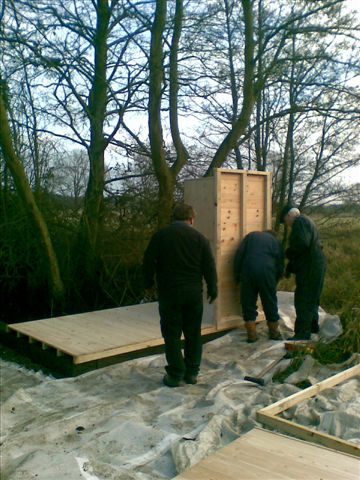
Monday 26th January was an important day for the Trust: the Southwold Railway grounded van body arrived from Herefordshire, and was efficiently set up in less than six hours.
Mr and Mrs Prior of Buildings Bespoke were onsite soon after 09.00, and Trust volunteers carried the unassembled parts of the van through the station site, so that the fragile turf was not damaged by vehicle tyres. Thanks to Sam White and family of Reydon, who donated the sleepers, we already had a very robust base, and the van body went up on this in short order.
The body is an accurate copy of one of the 1879 Midland Railway* Carriage and Wagon Company SR covered vans, with a few tweaks to make it more habitable – as it is close to the waterway, one door is a “falsie” (we had visions of people walking straight out into the pond), while the other is practical. The timber is treated, so we will further treat, then prime and undercoat it, perhaps leaving the gloss topcoat to better weather. The finish colour is SR maroon (probably the same as GER carriage maroon), with large white lettering SR and 13 (the original number).
The installation has been paid for by a generous donation from the Trust’s Chairman, John Bennett, and by the Heritage Train Fund.
The van body is the very first railway-related item for which the Trust has succeeded in gaining planning permission. The same permission covers a traditionally-styled composting WC, which will be the next to go in.
The team, anxious to be productive, varied the lifting and carrying by trimming a wind-felled tree, and re-planting the trimmings as saplings on the boundary. A trek east to the trackbed proper took a tarpaulin to wrap around our staff “bothy”, to reduce the cold and very cutting wind that seems to lie in wait for unwary trackbed clearers at that point.
On the next workday, the benefit of the new staff shelter was immediately apparent. Once we all had done the second coat of treatment on the van body, Toby and John stayed to do the primer coat on the interior walls, while Chris and James splashed off to the trackbed. In the middle of the customary clearance of rubbish and tree trimming, the sky fell – an almighty crash of thunder to the north heralded gale-force wind laced with hailstones – but the newly-improved shelter stood up to it (which was a very good thing, as the nearest other shelter was almost half a mile away). Rarely has a couple of hours’ work (on Monday) so quickly become essential (on Wednesday) – it does begin to seem that the site itself is lucky, despite the views of some of our neighbours.
The incinerator, burning brambles, dead ivy, miscellaneous rubbish, and diseased twigs, managed to keep going through the storm, despite (or perhaps because of) being blown over. A few more trees and large boughs have suffered, but the steps we have taken over the last year or so to allow live trees room to make root seem to have worked well. Anyway, we quickly trimmed off the storm-damaged timber, and as the sun came out – just because we wanted to – we planted the new 3-Mile Post permanently (it’s measured from Halesworth along the railway).
The painting team must have been quite snug in their new shelter – even though the hail came from the south, which is where the door is (and if you shut it, there’s no light at all!). We found, when they had gone, that they’d managed to do the entire interior of the van – except for the inside of the sliding door – for a very good reason that can be gleaned from the previous sentence.

